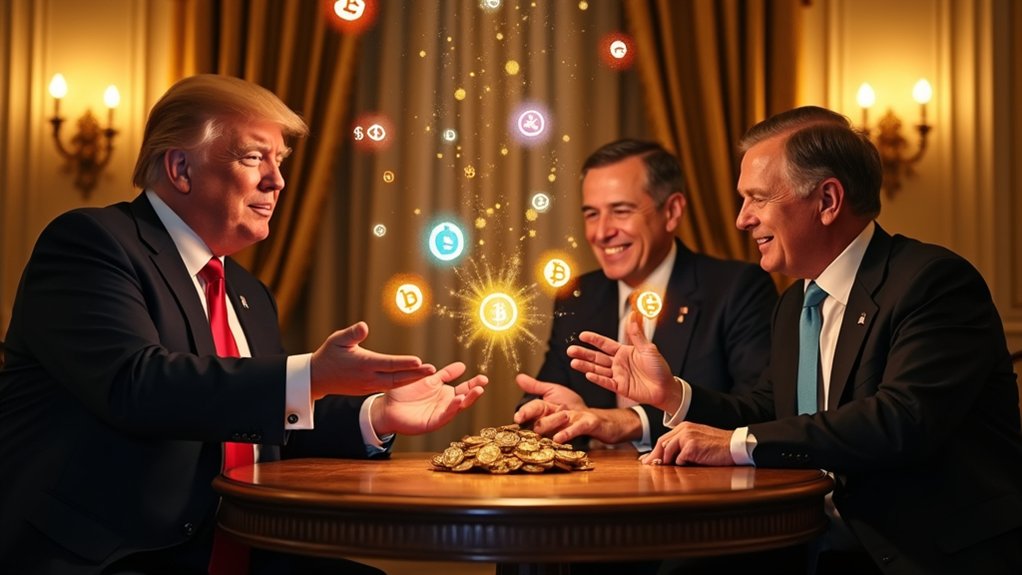The voluntary carbon market, valued at approximately $200 billion, has long suffered from the sort of opacity and fragmentation that would make even the most seasoned derivatives trader blush—a remarkable feat considering the creative accounting gymnastics that profession has witnessed.
With more than 30 registries operating under various standards, the market has resembled less a functioning exchange and more a collection of exclusive clubs, each with its own handshake and secret decoder ring.
The carbon market’s 30+ registries have operated like exclusive clubs, each clutching their own mysterious membership protocols.
Enter JPMorgan and S&P Global, wielding blockchain technology like a digital machete to hack through this regulatory undergrowth. Their collaboration centers on JPMorgan’s Kinexys platform, which currently processes approximately $2 billion in daily transactions—a figure that suggests the bank’s blockchain ambitions extend well beyond experimental curiosity. J.P. Morgan’s Kinexys unit has established itself as a blockchain infrastructure leader since 2015, providing the institutional credibility necessary for carbon market transformation.
The partnership with S&P Global Commodity Insights, EcoRegistry, and the International Carbon Registry aims to create what industry insiders diplomatically term “globally interoperable infrastructure,” though “functional market” might be more accurate.
The tokenization process transforms carbon credits—whether off-chain Verified Carbon Units or natively digital assets—into tradeable tokens managed through blockchain’s immutable ledger. This technological intervention addresses the market’s chronic liquidity problems by enabling 24/7 trading and settlement, a concept that apparently required revolutionary thinking in carbon markets despite being standard practice elsewhere for decades.
More importantly, blockchain’s transparency features offer a tamper-proof record of every transaction, theoretically eliminating the double-counting shenanigans that have plagued voluntary carbon markets. The technology’s ability to track credits from issuance through retirement provides the sort of audit trail that regulators find comforting and investors find investable.
The standardization benefits extend beyond mere convenience. By lowering barriers to entry and simplifying the labyrinthine restrictions that have historically deterred institutional participation, tokenization promises to release considerable capital inflows.
The enhanced price discovery mechanisms and competitive dynamics emerging from cross-chain trading capabilities suggest that carbon markets might finally achieve the liquidity and efficiency that climate finance desperately requires. Advanced blockchain platforms offering near-zero gas fees and ultra-high transaction speeds could further accelerate this transformation by making carbon credit trading more economically viable for smaller market participants.
Whether this technological intervention can transform a historically fragmented market into a coherent financial ecosystem remains to be seen, though the institutional backing suggests serious intent rather than mere blockchain tourism.




